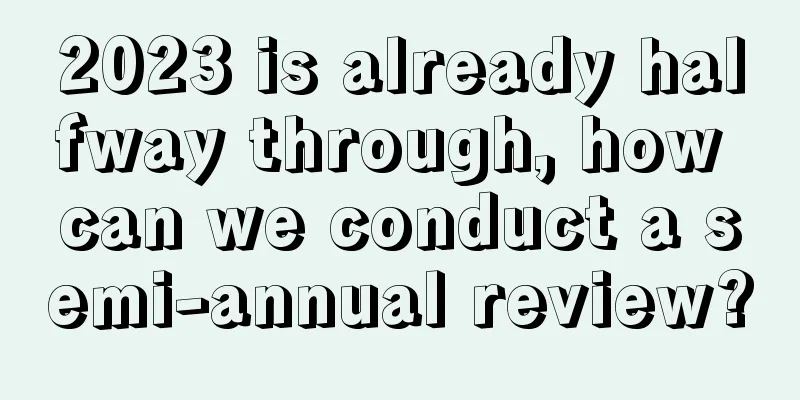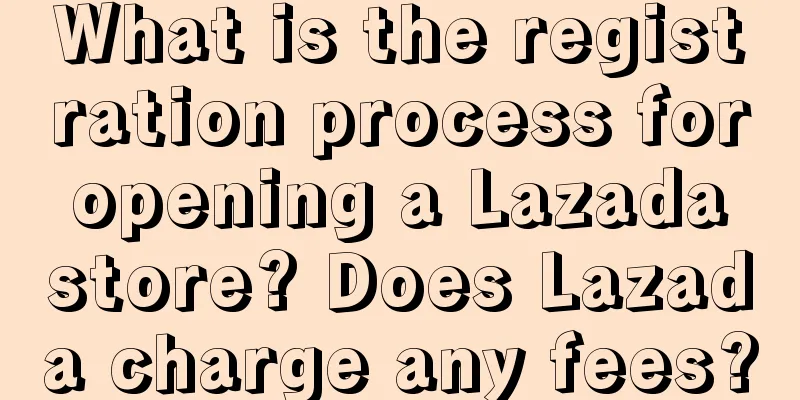2023 is already halfway through, how can we conduct a semi-annual review?

June is coming to an end, and 2023 is already halfway through. How was the work plan made at the beginning of the year executed? Did it meet expectations? To judge whether the work was done well, we need to "review". There is a difference between reviewing and summarizing. Summarizing is the conclusion drawn after an event is completed, and it focuses on the final result. Reviewing not only requires analytical conclusions, but also requires deducing the entire process, discovering problems, learning from experience, finding the root cause, and reflecting on and summarizing the rules. So to put it simply, doing a good review can bring three major benefits. First, avoid repeating mistakes "Avoiding repeating mistakes" is the first goal of reviewing. In the process of reviewing, looking back and finding the problem can help us learn from our mistakes and avoid repeating them, thus increasing the success rate. Second, find the right direction If you are heading in the wrong direction, you will not reach your destination no matter how hard you try. The process of summarizing and reviewing is actually a process of correcting errors in every link, just like constantly checking the GPS while moving to correct whether your trajectory is on the correct route. Third, establish a methodology Reviewing is to sort out and think about what you have done in the past. After deep thinking, you can string together all the experience points. Over time, you will form a set of thinking system and work methodology that you are familiar with. The next time you encounter the same problem, you can avoid pitfalls and improve efficiency. Everyone needs to review, but not everyone's review content is the same. Bosses, managers, employees, because of their different roles, naturally have different dimensions of review. Now let’s talk about how to review different roles one by one. 1. How does the boss review the situation?As the head of a business, you are responsible for the overall development of the company and need to consider corporate growth and profitability, as well as the development of the team and employees. Therefore, the core of the review should start from three dimensions: this year's operating goals, achieving cost reduction and efficiency improvement, and team optimization. First, we need to review the business situation in the first half of the year. Is it an increase or decrease compared to last year? What are the main reasons? This process requires in-depth discussion and analysis by the company's core executives. Then, based on the review, what are the business goals for the second half of the year? Think about all the methods, strategies and paths to achieve the goals. There are several key issues to consider:
This review process requires the joint efforts of senior executives from each department, especially the financial director, to analyze the expenditure and profitability of each department this year and whether optimization can be performed. For example:
Strategy is the boss's fantasy. The only thing to see if the strategy is right is whether the boss has a team to implement the strategy. The team is the foundation. This review needs to be discussed in depth with the head of the human resources department and analyze the human efficiency. The key points to consider are:
The above are three things that bosses should consider carefully when conducting a review. 2. How do managers review?For business managers, it is particularly important to conduct an internal review of the team, which can clearly understand the work situation of employees and facilitate their own goal setting and planning. At the same time, it can also allow employees to understand each other's work content and facilitate cooperation at work. In order to enable the team to achieve effective review and achieve the purpose of subsequent advancement, the "three-stage review method" is recommended here, which includes 3 stages: 1. Phase 1: PreparationThe manager will hold a review meeting based on the team's work content in the first half of the year and design the format of the review. There are several things that need to be notified to department members, including: the time of the meeting, the location of the meeting, the participants, the content of the meeting to be reported, and clarify the purpose and expected results of the review. 2. Phase 2: ReportingThe order of reporting is divided according to different departments or projects, and the reports are made in the order of specialists, supervisors, and directors from low to high. In order to unify the logic of the review, the summary can be made according to the GRAI review method , as follows:
For example, a company opens a new media account. Take the supervisor's perspective as an example:
The key to this stage is to summarize experiences and lessons, propose a process for follow-up action plans, and clearly distinguish between rewards and punishments, rather than focusing only on the good or bad aspects. 3. Phase 3: Advancing WorkAfter the review is completed, the review results will be sorted out, and the reflection findings, action plans, and management improvement suggestions will be sent to relevant team members. The documents and materials will be uploaded to internal documents for employees to review and use later. After the new measures are implemented, the effects will be evaluated at regular intervals, and follow-up improvement measures will be discussed based on the actual situation. The results of the review will be truly implemented to ensure the positive development of the team. The above is the review method for managers. As a manager, the success of the team is the real success, so you should pay more attention to the development and improvement of individual employees. 3. How do employees review?The employee review needs to highlight the actual work content, clearly present the process, results, and data, so that the leader can quickly understand what you have done and what you have accomplished. Do not use ambiguous words and results without data. Here you can review according to the CVMA method: 1. Compare: Review goals and resultsFirst, reorganize the work of the whole year according to the work project, and see which links you participated in. Then list the specific work done for each project, including the goal, the work in charge, the results of the work, and the completion of the goal. For example:
You can fill in the listed tasks in the table below to compare goals and results more intuitively. 2. Value: Evaluating value and key stepsThe second step is to evaluate the importance of the work you are responsible for and summarize the highlights and shortcomings. You can answer the following questions:
For example: I am responsible for script writing in the Douyin project. I established a script sop process, which improved the writing efficiency by 20% and made it easier for newcomers to use. I established a content library of 100 related scripts, which improved the efficiency of script editing. There are some shortcomings in topic selection, and I will analyze 30 accounts in the future to select suitable topics. 3. Method: Discovering patterns and finding commonalitiesThe third step is to summarize the experience through the process of comparing the target results and evaluating the value, so as to apply it to the next work or project. You can answer these questions:
You can list the reasons and experience summaries for each task according to the table below. 4. Apply: Summary, reflection and scenario applicationAfter summarizing the rules, we need to think about how to apply this rule to other work scenarios. We need to think about:
When you review each task carefully and reflectively, and use the conclusions from these reflections to improve subsequent plans, you will definitely achieve tremendous improvement. 4. Final ThoughtsConfucius said, "I examine myself three times a day." In fact, he was talking about reflection and review. Although there was no such concept in ancient times, people were already aware of the importance of reflection. The greatest progress of a person comes from reviewing and summarizing daily work, planning, and having an open mind. Without reviewing, people will make the same mistakes over and over again without accumulating experience. Only by constantly reviewing can you make continuous progress. Author: Yan Tao Source: WeChat public account "Yan Tao Sanshou (ID: yantao-219)" |
>>: The core competitiveness of the workplace is language
Recommend
How is Amazon's star rating calculated? How can I improve it?
On the shopping platform of e-commerce giant Amazo...
Good planning is the driving force for a company's rapid growth
In the eyes of many people, planning is a rigid pl...
Shopee advertising skills, what are the advertising strategies?
To do well on Shopee, you need to make necessary i...
Why can Coca-Cola transcend cycles but Zhong Xue Gao can’t?
In today's digital wave and evolving consumer ...
How to operate a new Shopee store? A beginner's guide to Shopee operations
If a new Shopee store has no traffic, there are tw...
How to determine whether Amazon is self-operated? What are the methods?
When shopping on Amazon at home, people will basic...
How can private domain operators efficiently formulate and optimize private domain operation SOPs?
This article explores the importance, steps, and p...
How can we keep Xiaohongshu notes in the top 10 of search keywords?
How to get more traffic by posting notes on Xiaoho...
They do everything except selling goods, why did Brother Yang and Simba fade out of the live broadcast room?
Recently, more and more top anchors have faded out...
How is Shopify's fee calculated? What is included?
Shopify is a relatively well-developed independent...
How to remove Amazon variants? What should I pay attention to when removing variants?
As the world's largest e-commerce platform, Am...
100 Keyword Predictions for 2023 | Health (81-90): Gua Sha, Meta-Mindfulness, and “Rest” Exercises
WPP's brand Wunderman Intelligence released it...
How to value Xiaohongshu?
How long have you not downloaded a new non-tool AP...
With over 66 million members and one of the top 3 new tea brands in China, how does Chabaidao operate its private domain?
This article analyzes and explains Chabaidao's...
From the old man in Tianjin to the BGM of the Asian Games, what cities have taught us about marketing methodology
Recently, Internet celebrity cities have frequentl...









